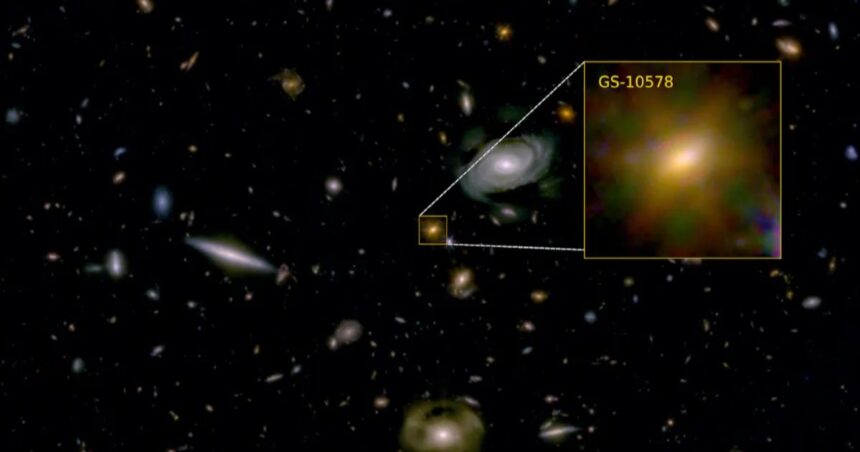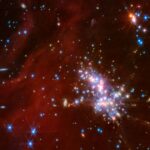Astronomers using the James Webb Space Telescope (JWST) made a shocking discovery. They witnessed a black hole ‘killing’ its galaxy. This event has left the scientific community buzzing with excitement and curiosity.
The galaxy in question is known as GS-10578, or “Pablo’s Galaxy.” It is located about 11.5 billion light-years away from Earth. This means we are seeing it as it was just 2.3 billion years after the Big Bang. The black hole at the center of this galaxy is massive. It is 200 billion times the mass of our Sun.
The Culprit: A Supermassive Black Hole
Astronomers have long suspected that black holes can kill galaxies. But this is the first time they have observed it in such detail. The black hole in Pablo’s Galaxy is ejecting gas at a speed of 2 million miles per hour. This gas is essential for star formation. Without it, the galaxy cannot form new stars and becomes ‘dead’ or ‘quiescent’.
The James Webb Space Telescope is the most powerful space telescope ever built. It can see further into the universe than any previous telescope. This allows it to observe galaxies and black holes in unprecedented detail. The JWST’s observations of Pablo’s Galaxy have provided the first solid evidence of a black hole killing its galaxy.
The Process of Galactic Murder
The black hole in Pablo’s Galaxy is creating powerful winds of gas. These winds are pushing out the gas that the galaxy needs to form new stars. This process is known as ‘quenching.’ When a galaxy is quenched, it can no longer form new stars and becomes dormant. This is what has happened to Pablo’s Galaxy.
This discovery is important for several reasons:
- It shows the power of the James Webb Space Telescope to make groundbreaking discoveries.
- It confirms that black holes can kill galaxies by starving them of gas.
- It provides new insights into the life cycle of galaxies.
The discovery of a black hole killing its galaxy has significant implications for our understanding of the universe. It suggests that black holes play a crucial role in the evolution of galaxies. It also raises new questions about the nature of black holes and their impact on the universe.
Astronomers plan to use the James Webb Space Telescope to study more galaxies and black holes. They hope to learn more about how black holes kill galaxies and what this means for the universe. This research could lead to new discoveries and a deeper understanding of the cosmos.





